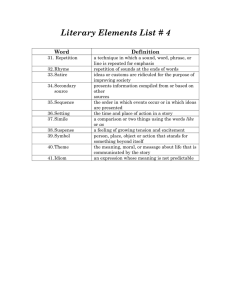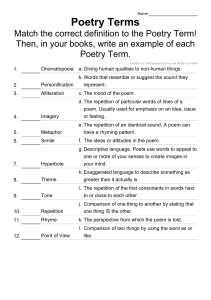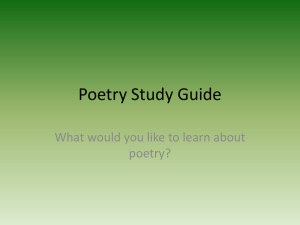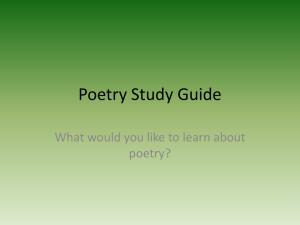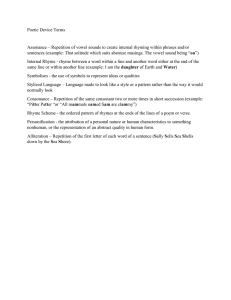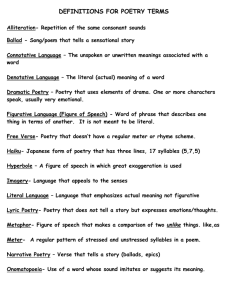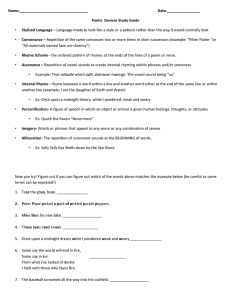Poetry Terms: Definitions & Examples
advertisement
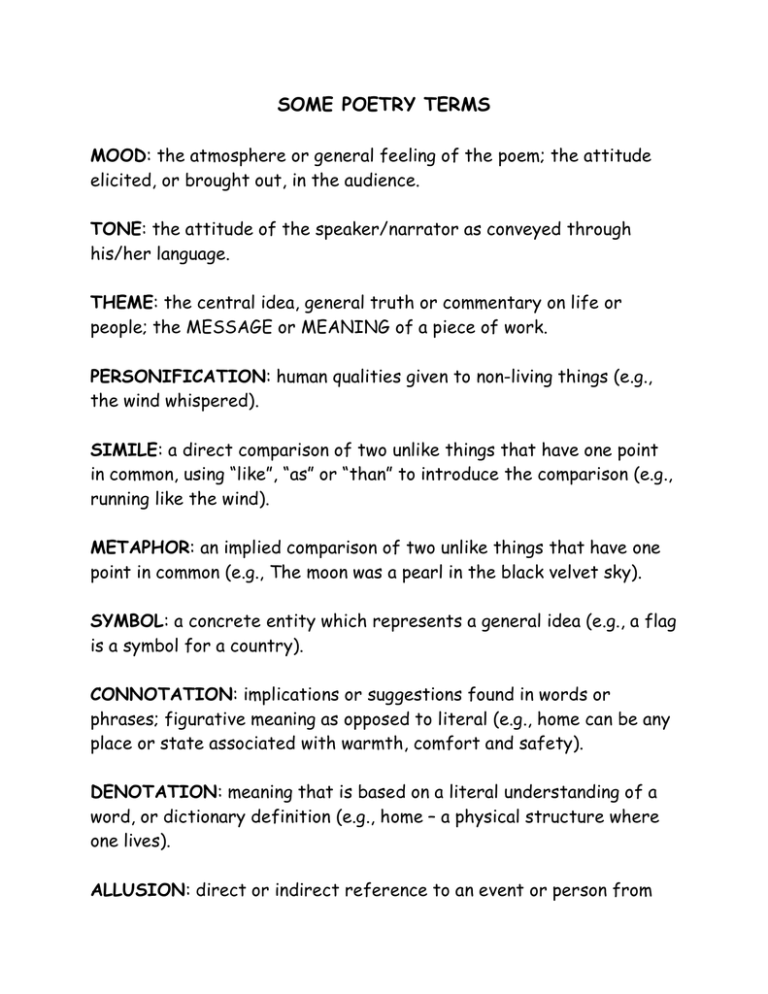
SOME POETRY TERMS MOOD: the atmosphere or general feeling of the poem; the attitude elicited, or brought out, in the audience. TONE: the attitude of the speaker/narrator as conveyed through his/her language. THEME: the central idea, general truth or commentary on life or people; the MESSAGE or MEANING of a piece of work. PERSONIFICATION: human qualities given to non-living things (e.g., the wind whispered). SIMILE: a direct comparison of two unlike things that have one point in common, using “like”, “as” or “than” to introduce the comparison (e.g., running like the wind). METAPHOR: an implied comparison of two unlike things that have one point in common (e.g., The moon was a pearl in the black velvet sky). SYMBOL: a concrete entity which represents a general idea (e.g., a flag is a symbol for a country). CONNOTATION: implications or suggestions found in words or phrases; figurative meaning as opposed to literal (e.g., home can be any place or state associated with warmth, comfort and safety). DENOTATION: meaning that is based on a literal understanding of a word, or dictionary definition (e.g., home – a physical structure where one lives). ALLUSION: direct or indirect reference to an event or person from history, myth, religion, literature, pop culture, etc. OXYMORON: two terms, opposite in sense, linked together (e.g., cruel kindness, wise fool); the placing of these words side by side is called juxtaposition. IMAGERY: a word picture, involving the comparison between the thing being described and the concrete picture in the poet's mind; includes similes, metaphors, and other examples of figurative language that appeal to one's sight. SENSORY APPEAL: description perceived through one of the five senses (e.g., for hearing, the screeching of the brakes). SOUND DEVICES ALLITERATION: the repetition of the initial sound in two or more words that are consecutive or close together; used to heighten the rhythmic effect and emphasize an emotion or sensation (e.g., big bad boys, friendly phone, always avoid aristocrats). RHYME: repetition of the same sound in different words (e.g., may/day, shaken/taken, look/book). The most common form is end rhyme, which occurs at the end of lines of poetry. ONOMATOPEIA: words which have a sound that imitates or resembles the actual sound being referenced (e.g., snap, splash, hiss, zip). RHYTHM: the pattern of stressed (strong: /) and unstressed (weak: ∪) syllables in a poem, created through the repetition of a particular sequence, giving many poems a musical quality. ∪ / ∪ / ∪ / ∪ / (e.g., He clasps the crag with crooked hands.)

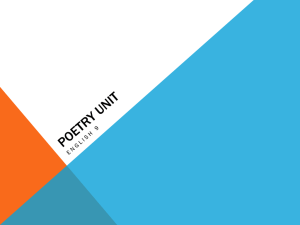
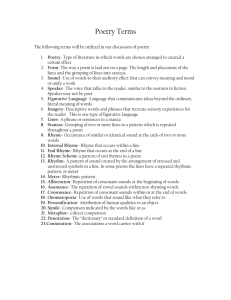
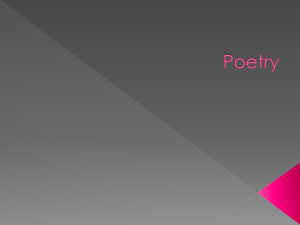
![English poetic terms[1].](http://s3.studylib.net/store/data/009640365_1-09d91eea13bb5c84d21798e29d4b36a3-300x300.png)
